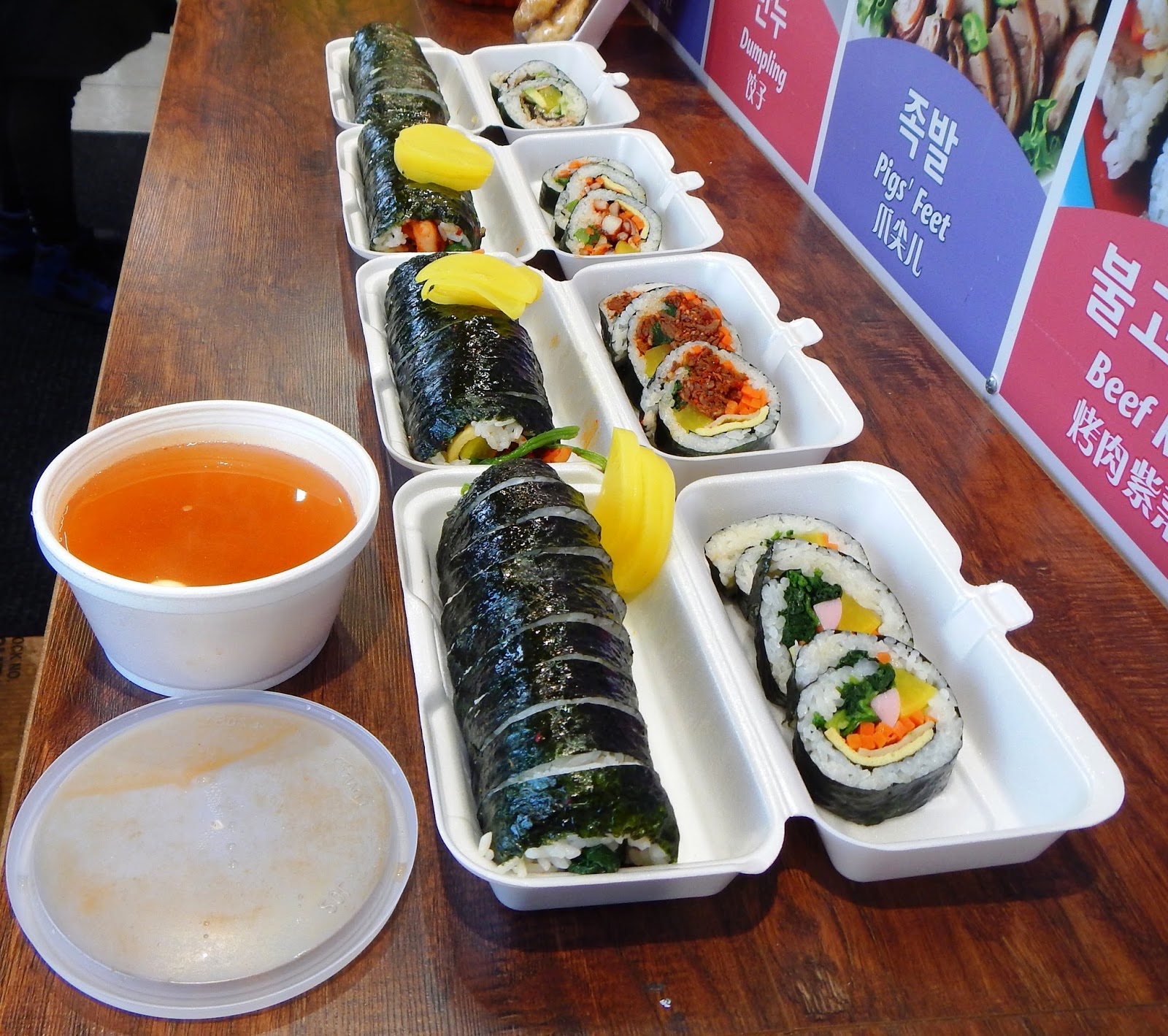Serious Eats contributor Chris Hansen
puts it best: kimbap is “the
stuff of road trips, picnics, and school lunches.” Kimbap (also gimbap, or 김밥) literally means, “seaweed rice”.* As with Japanese sushi, kimbap is convenient rolls of ingredients (including a lot in appetizer
plates, or banchan), wrapped up in
freshly-steamed white rice and dried seaweed:**
 |
| Array of kimbap rolls! |
So, where can you get your kimbap fix? Flushing Food highly
recommends Song’s Family Food (160-06 Northern Boulevard), a take-out
restaurant (boonshik jip, or분식집) complete with a (small) parking lot: ***
Flushing Food opted for four cheap
but heaping rolls, each with a complimentary (and complementary!) bowl of spicy
bean sprout soup. Each bite was warm, because in contrast to sushi, Song's serves up kimbap using rice fresh from the
steamer, sans the rice vinegar common to sushi
recipes.
Though kimbap is best consumed in one bite per piece, we recommend
carefully divvying up each piece into smaller sections for any children.
The two kimbap winners were both spicy, and a mere $6.00 per brimming container:
 |
| Spicy beef kimbap. |
 |
| Spicy squid kimbap. |
Our eel kimbap was more on the sweet side:
 |
| Eel kimbap. |
Finally, the traditional kimbap was the milder-flavored
restaurant namesake, “Song’s kimbap”.
If you’re ordering zestier rolls, start out with this one so the spice from
other flavors don’t crowd out the lighter taste of this one:
 |
| Song's kimbap. |
We also stopped by the drinks
section to pick up bottles of sweet (barley) rice tea (also shikhae****) and cinnamon tea ($3.00
per bottle). While barley’s more appealing as the weather warms up, don’t
overlook cinnamon! Both sugary drinks were equally refreshing.
May Flushing Food suggest: that you never refrigerate leftover kimbap!
The rice will harden into an unappetizing
texture.*****
* But don’t go calling any of your
friends “seaweed”. And nab extra brownie points for consistently calling these
rolls kimbap, not sushi. More basic food phrases here.
**, ***** Interview with
Lea Kim, March 3, 2015. Born and raised in the South Korean coastal town of Pohang , Lea is head photographer at Dana & Ellie. She resides in Flushing ,
NY
**** Shikhae's primary ingredient, mai ya, doubles as a digestion aid and stress reliever. Credit for this traditional Chinese medicine tip goes to Taehoon Kim of Regen Acupuncture.
Media credits: Helen Y.
Gadget: Nikon® Coolpix™ AW110
Software: Fotor


No comments:
Post a Comment